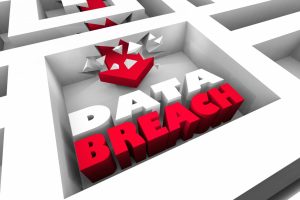Individuals tasked with securing information for institutions and organisations across the globe understand the importance of data loss prevention. Safeguarding information that is stored, shared and collaborated on is a crucial element of any company’s security protocols if it wants to keep running effectively and remain resilient.
The negative impact of data leaks
Shielding confidential company information on contracts and deals can allow enterprises to keep a competitive edge and stay ahead of rivals. A data leak can easily ruin any advantages and exposure of company dealings in the press can affect a firm’s business reputation.
Keeping data records that include Personally Identifiable Information (PII) secure is also vital. Files containing PII on personnel, clients, customers, and external suppliers that are accessed without authority in a data breach can result in expensive costs for non-compliancy if companies are judged negligent. A percentage of a firm’s annual earnings may be demanded by the authorities, with fines from data regulators sometimes running into millions.
Even without exposure of personal or confidential information, data loss can be financially crippling for companies. Outside of expensive court battles and fines, businesses will still suffer the associated costs of system down-time, disruption to daily workflow and fees from external security consultants investigating incidents. Cybercriminals are often at the root of data leaks and if malicious software is downloaded into a company’s system or access is blocked to essential data by ransomware, businesses may be confronted by all these issues.
To avoid these unfortunate scenarios, preventative steps are always the best policy. Whether a business is just starting out or a large-scale corporation, Data Loss Prevention (DLP) measures are of the utmost importance and must be relentlessly employed and enforced. These practices will ensure a full understanding of the data a company retains and uses, and keep control of how it is used and by whom. With detailed information of where data is sent or stored and who can access it, firms can also be sure they are compliant with important data protection regulations.
Controlling data with identification and classification
To safeguard enterprise data effectively, the first step for IT security professionals is to gain a comprehensive understanding of all information stored and used by their company. Data classification and data discovery technology is available to help information officers make certain that sensitive files and documents are never stored in unsecure locations and assist them in controlling user access. Data classification systems can ensure that confidential data is always clearly labelled marking the level of protection it requires so that it is not kept in places where it can be easily accessed without authorisation.
While data classifications may sometimes need to be revised, access to make such an update should never be given freely. To avoid classification levels being falsified, only users who have the highest level of privileges must be allowed the capability to downgrade a data classification.
Employ access control lists
With an Access Control List (ACL), IT security teams can clearly see users who have the appropriate clearance status to access data of varying levels of confidentiality. The ACL employed can be an internal part of an enterprise’s operating system, or come in the form of an application.
ACLs can also be used to avoid security breaches caused by staff being lured to unsecure sites by phishing emails. The ACL can be set up to use whitelists and blacklists that dictate what websites employees are allowed to visit and which they are not. When links are contained in malicious emails, that do not direct users to phishing sites, but instead cause them to download malware, an ACL can protect against this as well. Using the same black and white lists, they can prohibit or permit the installation of software on company servers and devices.
Stay in step with the latest patches
Keep systems safe by ensuring all applications and OSs are always running the most up-to-date version, and use the latest available patches to protect against vulnerabilities. After patches are installed in critical infrastructure, they must be rigorously tested assessing whether any weaknesses or compromises can be detected.
Educating employees on potential risks
Every employee with access to view or use data in an organisation should be trained in data protection procedures, ensuing they understand the security measures adopted by their company. They should understand the part they play in keeping company data secure, including who they can send it to and where it should be stored. A clear line of reporting should also be understood, so that in the event of a potential leak they react quickly and alert IT security immediately.
Remember usability when you secure your system
Places where confidential or sensitive information may be stored on your network, even if only temporarily, must be identified and fully secured accounting for each potential access route. An enterprise’s system is only as secure as the weakest point it contains but security professionals must always consider functionality when bolstering their defences. An agile and robust security system that is easy for users to work with and does not hamper workflow is also essential. Always make sure personnel can access the information and tools they need to carry out their role, but make sure any programs or data not necessary are unavailable, thus blocking off paths for possible attacks.
Superior protection from data encryption
Encrypting stored and shared information is a crucial practice in answering the threat of data loss. Whether your system and servers are infiltrated by hackers or an email containing confidential material is sent to an incorrect recipient accidentally, encrypting company content can offer you total protection.
At Galaxkey, our secure platform delivers powerful end-to-end encryption that is simple for staff to use, ensuring it is employed effectively. Whether your private data is at rest or being transmitted only those to whom you give the appropriate level of access will ever be able to view or use it. Get in touch today to explore this powerful asset for your enterprise.



